Last Chance to Catch NYC's Holiday Notalgia Train
We met the voices of the NYC subway on our nostalgia ride this weekend!


 Prospect Park. Photo by gigi_nyc from the Untapped Cities Google Glass Scavenger Hunt
Prospect Park. Photo by gigi_nyc from the Untapped Cities Google Glass Scavenger HuntProspect Park is one of the most beloved of New York City’s parks, rivaling Central Park. Indeed, it is often seen as the park in which designers Frederick Law Olmsted and Calvert Vaux learned from their mistakes on the seemingly unrivaled Central Park. Central Park’s secrets are a favorite among urban explorers and New York City residents alike, but the more perfected Prospect Park is not without its fascinating fun facts and secret spots. Here we have gathered together the secrets we’ve written about before and discovered through the great book Prospect Park: Olmsted and Vaux’s Brooklyn Masterpiece by David P. Colley.
The panic of 1873 scaled down the plans for Prospect Park, allowing only ongoing projects to be completed. This meant that structures designed by Calvert Vaux, like a restaurant to be called the Refectory, an observation tower modeled after Venice’s Piazza St. Marco bell tower, and a carriage concourse were never completed. Learn and see more about these structures here.
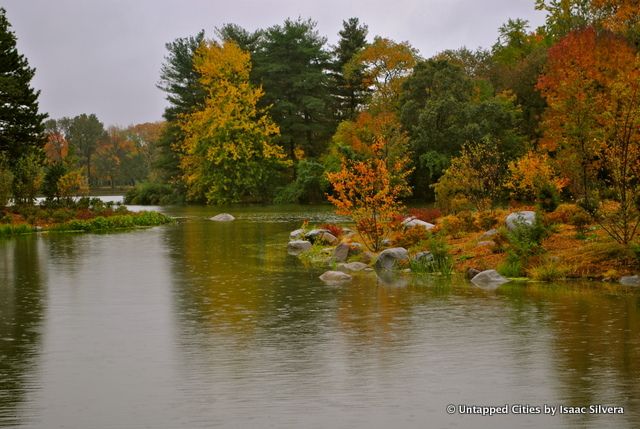
Olmsted was one of those quintessential creative, explorer types. Turning down Yale, he wandered around the countryside, traveling like a modern-day backpacker, signing up as a seaman aboard a ship going to China, and lived as a farmer for 7 years in Connecticut. It was this combination of experiences, particularly the latter, which gave him a keen understanding of the importance of the drainage systems in parks. Ahead of his time, the system he designed also used runoff to refill the bodies of water in Prospect Park (and Central Park) rather than adding that water into the municipal sewer system, which is frequently overrun as it is.
Prospect Park: Olmsted and Vaux’s Brooklyn Masterpiece deems the system “an invisible web” of clay drainpipes that run the length of Long Meadow, connected by smaller pipes and a series of “vaulted retention basins.”

The views from and within Prospect Park were key design elements, particularly during a time where the hills of the land provided panoramic views towards Manhattan, New Jersey and Staten Island. As a reflection of the importance of these hilltops, a camera obscura was built in 1874–an enclosed theater where landscape scenes were projected onto a table from a lens above. A spot to still catch great views is Lookout Hill, where you can see the Coney Island Parachute Jump and Verrazano Bridge.

A man by the name of Hicks Post ran the Valley Grove Tavern, which he affectionately called his “little snuggery,” near Battle Pass. It was a popular stop for those en route to Coney Island. A few hundreds yards away was another “watering hole.”
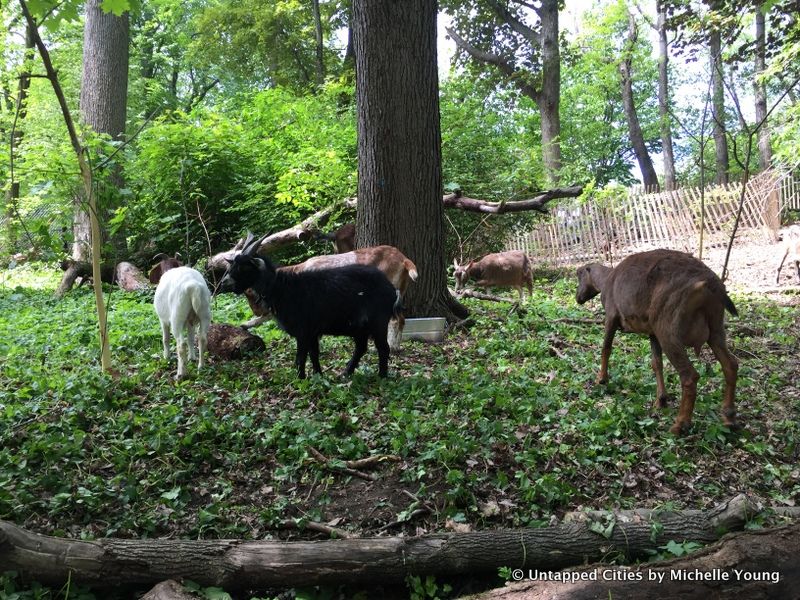 The goats in Prospect Park (in 2016)
The goats in Prospect Park (in 2016)The term for catching loose animals was having them “impounded,” applied to cars today. According to Prospect Park: Olmsted and Vaux’s Brooklyn Masterpiece, the take [in 1872] was forty-four pigs, thirty-five goats, eighteen cows, and twenty-three horses.” But into the 1930s, flocks of white-faced New Hampshire sheep and black-faced Southdown sheep tended the Long Meadow led by shepherds and dogs.
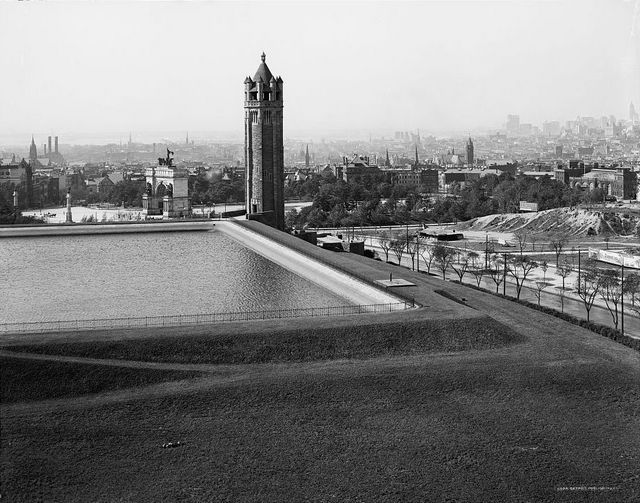 Image from Library of Congress. Mount Prospect Park actually used to be a reservoir. The Soldier’s and Sailor’s Arch, as well as the entrance to Prospect Park is in the background.
Image from Library of Congress. Mount Prospect Park actually used to be a reservoir. The Soldier’s and Sailor’s Arch, as well as the entrance to Prospect Park is in the background.In the Viele plan, the park would have been situated further east and Flatbush Avenue was planned as an elevated, 100-foot wide thoroughfare, something Viele also admitted “might be regarded as a serious blemish to the beauty of the finished park.” The east side of the park in Viele’s plan was set aside by Olmsted & Vaux for city institutions, now home to Brooklyn Museum, the Brooklyn Botanic Garden, the Brooklyn Library and Mount Prospect Park. Overall, the park would have been 55% smaller than what it is today.
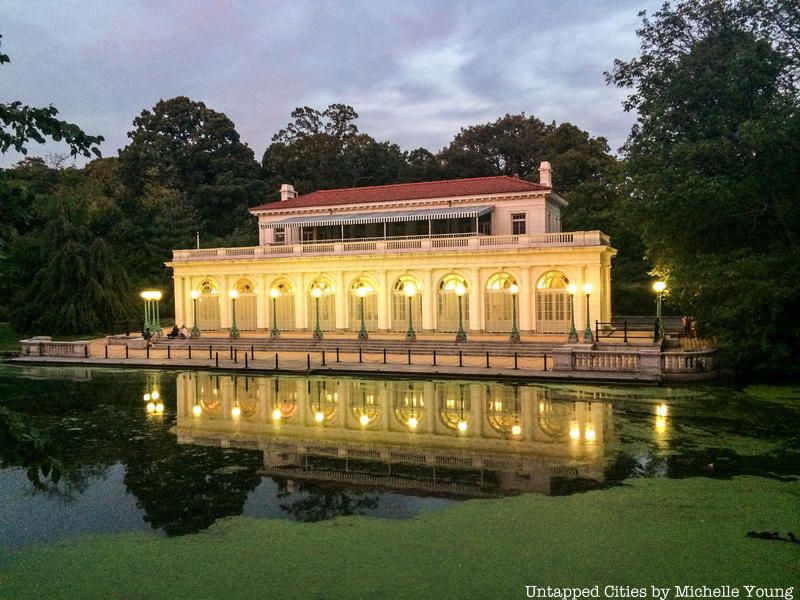
A boat from around 1910 served as a reference for the design of the MV Independence, an electric boat that sails in Prospect Park today from the Boathouse.
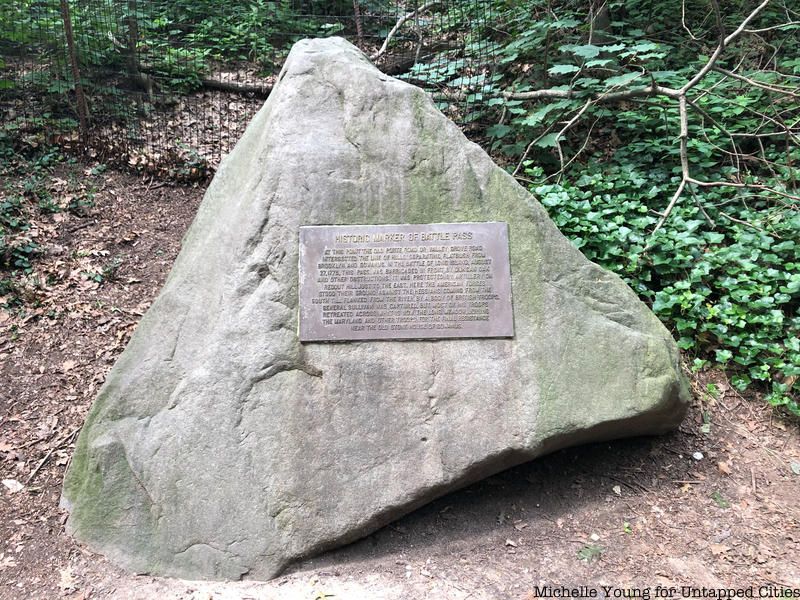
Though the Battle of Brooklyn (or the Battle of Long Island) was a deadly battle for the Americans, and included a panicked retreat across Long Meadow, the Maryland Regiment, only 400 strong, led by Major Mordecai Gist held against 2,000 Scottish and Hessians in what is now Park Slope around the Old Stone House, allowing Washington’s Army to cross the East River into Manhattan. When Prospect Park was built, the remains of many soldiers left behind, as well as fortifications and pits were discovered. You can also find other remnants and reminders in Green-Wood Cemetery.
 East Drive and the Donald and Barbara Zucker Natural Exploration Area. Photo by gigi_nyc
East Drive and the Donald and Barbara Zucker Natural Exploration Area. Photo by gigi_nyc According to David P. Colley in Prospect Park: Olmsted and Vaux’s Brooklyn Masterpiece, the path of East Drive partially follows an old Native American trail “that branched off a larger path that ran between what is now Atlantic and Flatbush Avenues.”
 The Replica of Mount Vernon in Prospect Park. Image from Brooklyn Historical Society via Prospect Park Alliance
The Replica of Mount Vernon in Prospect Park. Image from Brooklyn Historical Society via Prospect Park AllianceIn 1932, Robert Moses had a replica of Mount Vernon built in Prospect Park to to mark the 200th anniversary of George Washington’s birth. The building, constructed by Sears, Roebuck & Company (who also delivered another replica to the Exposition Coloniale Internationale in Paris in 1931) and designed by architect Charles K. Bryant, lasted lasted a mere two years before being torn down. The house was located at the base of Lookout Hill on the Peninsula of the Lake.
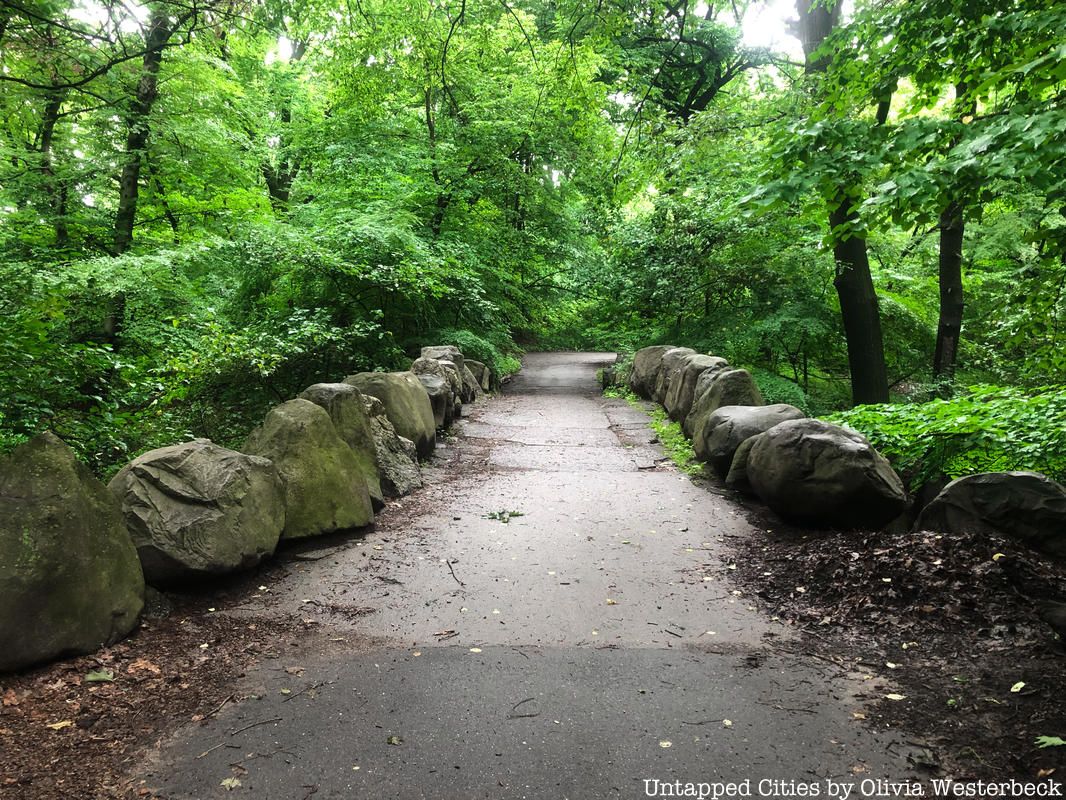
100,000 years ago the land that became Prospect Park was covered with millions of tons of ice, in sheets up to 1,000 feet high. The boulders in the park were dropped by the glaciers from the New Jersey Palisades. Boulder Bridge in Prospect Park is made from such boulders known as glacial erratics.
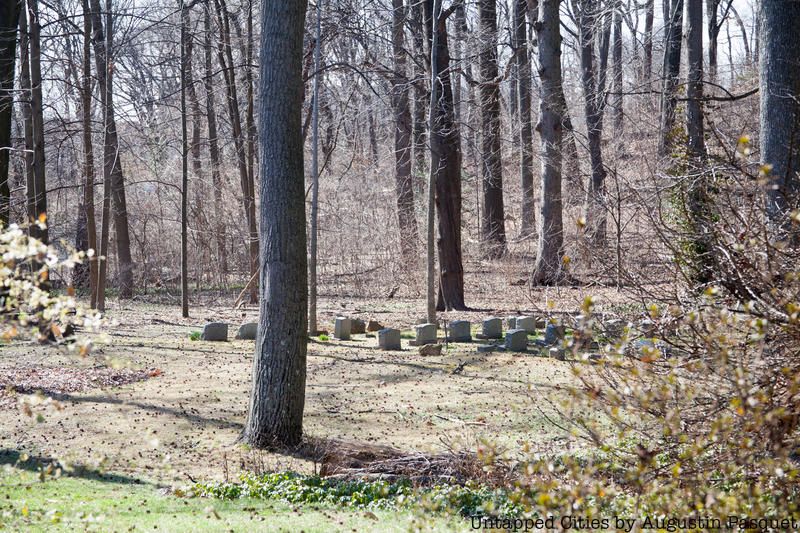
Off of Center Drive, there are 2000 gravestones and buried bodies, many older than the park itself. This property, the only private one in the park, is a cemetery owned by the Religious Society of Friends, more commonly known as Quakers. The graves remained when Prospect Park opened in 1867, and it is still an active cemetery site. In the original plan for Prospect Park by Egbert Viele, the cemetery wouldn’t have made it in the boundaries. What this means today is that Montgomery Clift fans can walk through Prospect Park to pay their respects to the actor, who is buried in the Quaker Cemetery. Read more about the Quaker Cemetery here.

“Wildman” Steve Brill leads foraging tours of New York area parks, including Prospect Park. Technically foraging is illegal in the city parks, but Brill used to be the official Parks Department naturalist. The park rangers wave when they see him leading his tours and Brill says he practices sustainable foraging
Want to explore the park for yourself? Join Untapped Cities for a guided walking tour of the Secrets of Prospect Park!
Next, explore the top 10 secrets of Central Park and the top 10 secrets of Grand Central Terminal. Get in touch with the author @untappedmich.
Subscribe to our newsletter